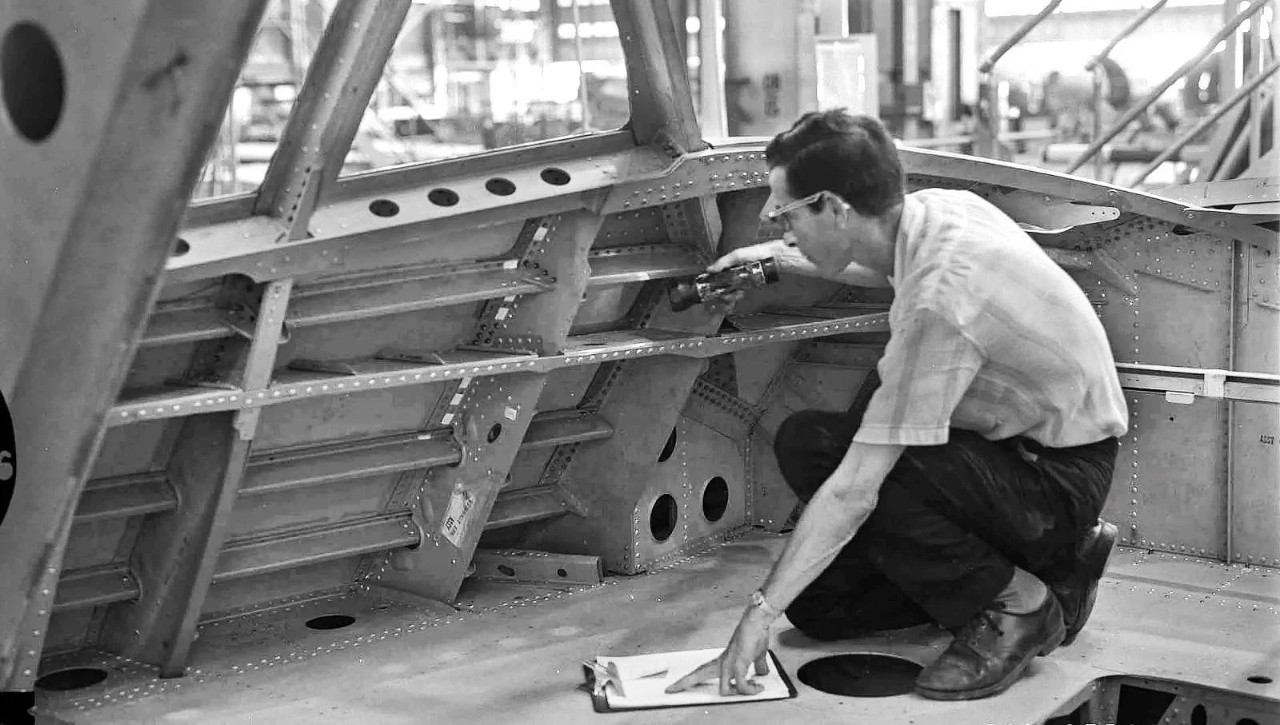
Above: A Boeing inspector examines the interior structure of a 747 fuselage in 1968. (Boeing Archives photo © Boeing)
How a broken piece of spruce set Boeing on its quality journey
Photos: An act of craftsmanship in 1916 sparked the company’s culture of personal commitment and attention to detail.
When Bill Boeing visited his factory on Seattle’s Duwamish River in 1916, he noticed a set of structural wing ribs, made from spruce, had been cut poorly. He knocked them to the floor, snapped one in half and told the team, “I, for one, will close up shop rather than send out work of this kind.”
More than a century later, as the company he founded joins manufacturers around the globe in marking World Quality Month, leaders say Bill Boeing’s principles still define how the company should operate: If it’s built here, it’s built right.
Quality gets personal
Two years after Bill Boeing’s factory visit, John Wilson – later known as the “Guardian of Boeing Quality” – introduced one of the company’s first inspection systems, using stamped tags to verify each part’s status.
- It was a simple but revolutionary idea: Each stamp became an inspector’s signature – a visible sign of accountability for every part.
“Our tools have evolved, but the principles have not,” said Doug Ackerman, who, as Commercial Airplanes’ current vice president of Quality, is charged with carrying on Wilson’s legacy. “We still take personal ownership of every stamp of approval.”
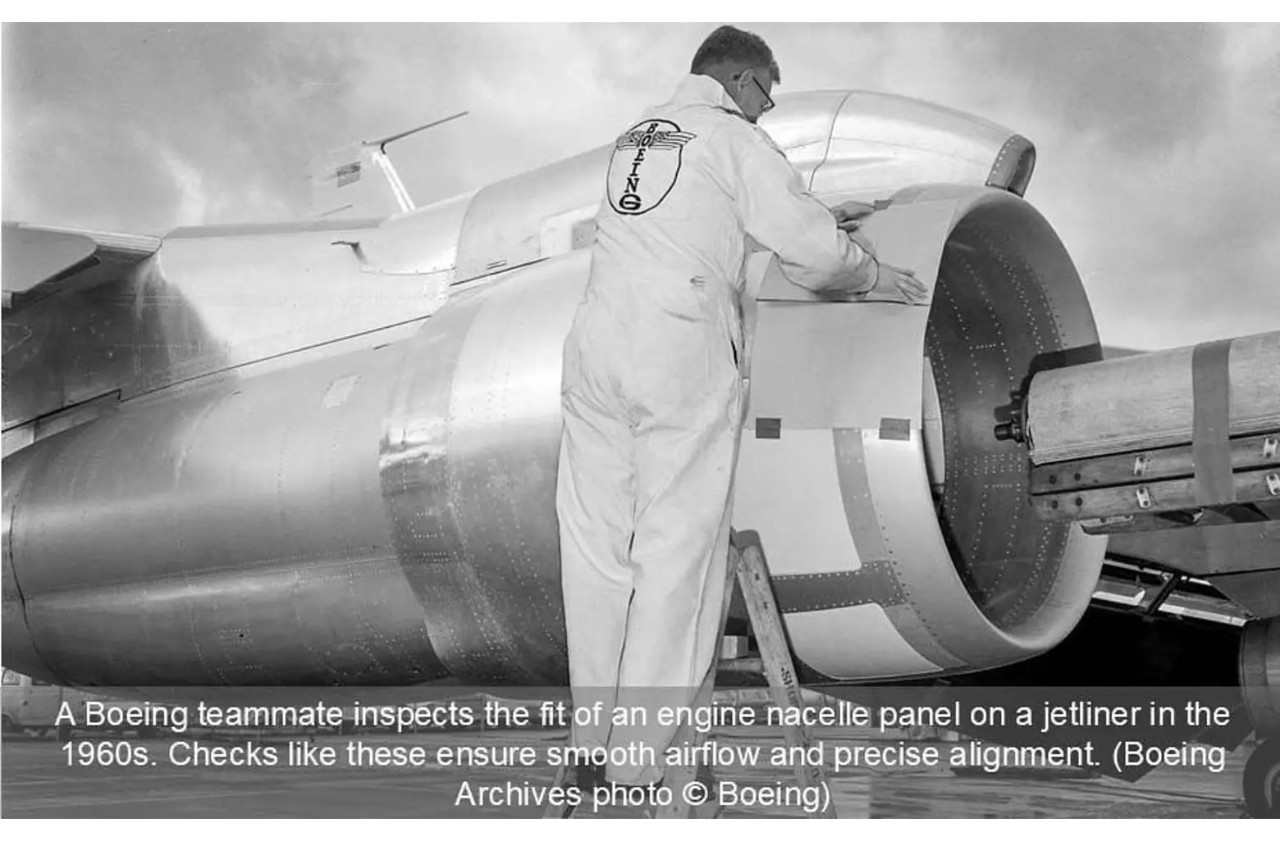

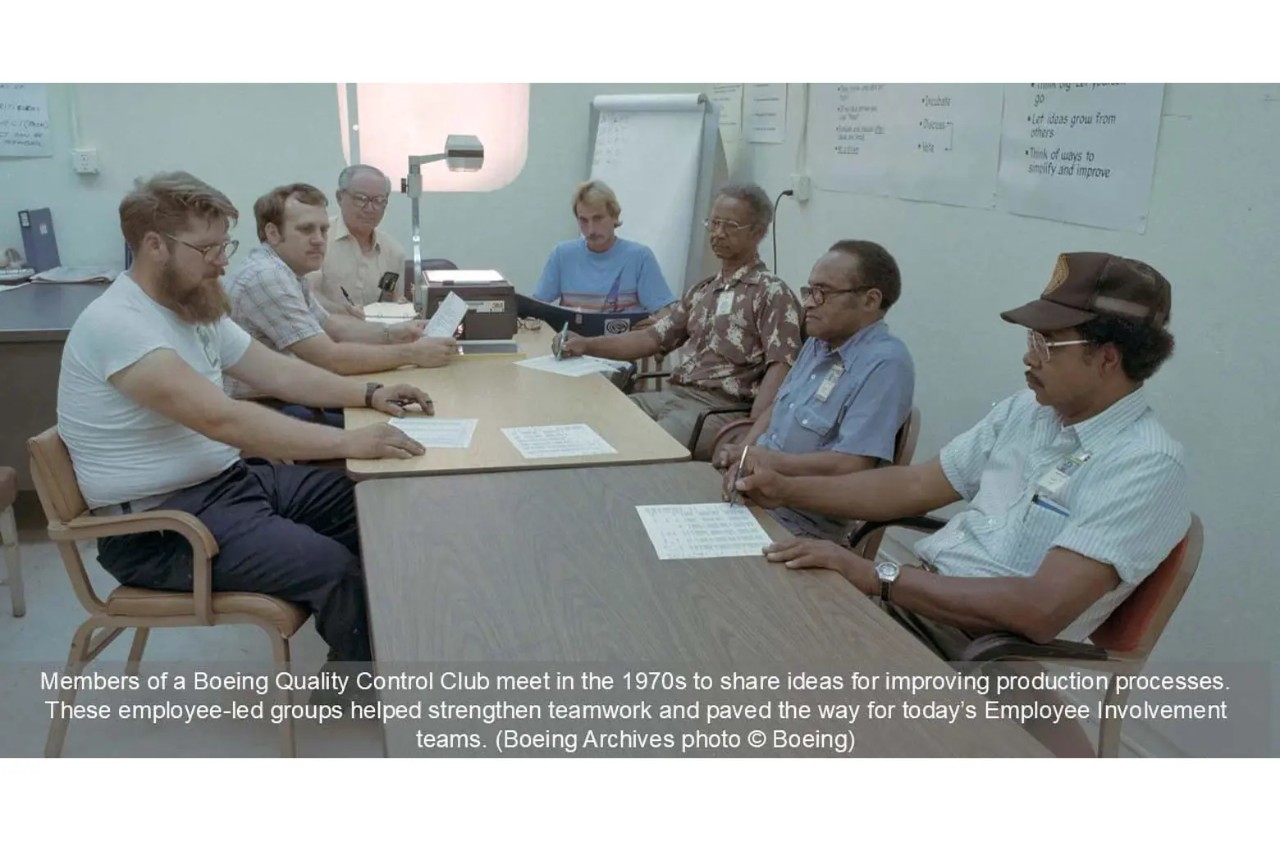
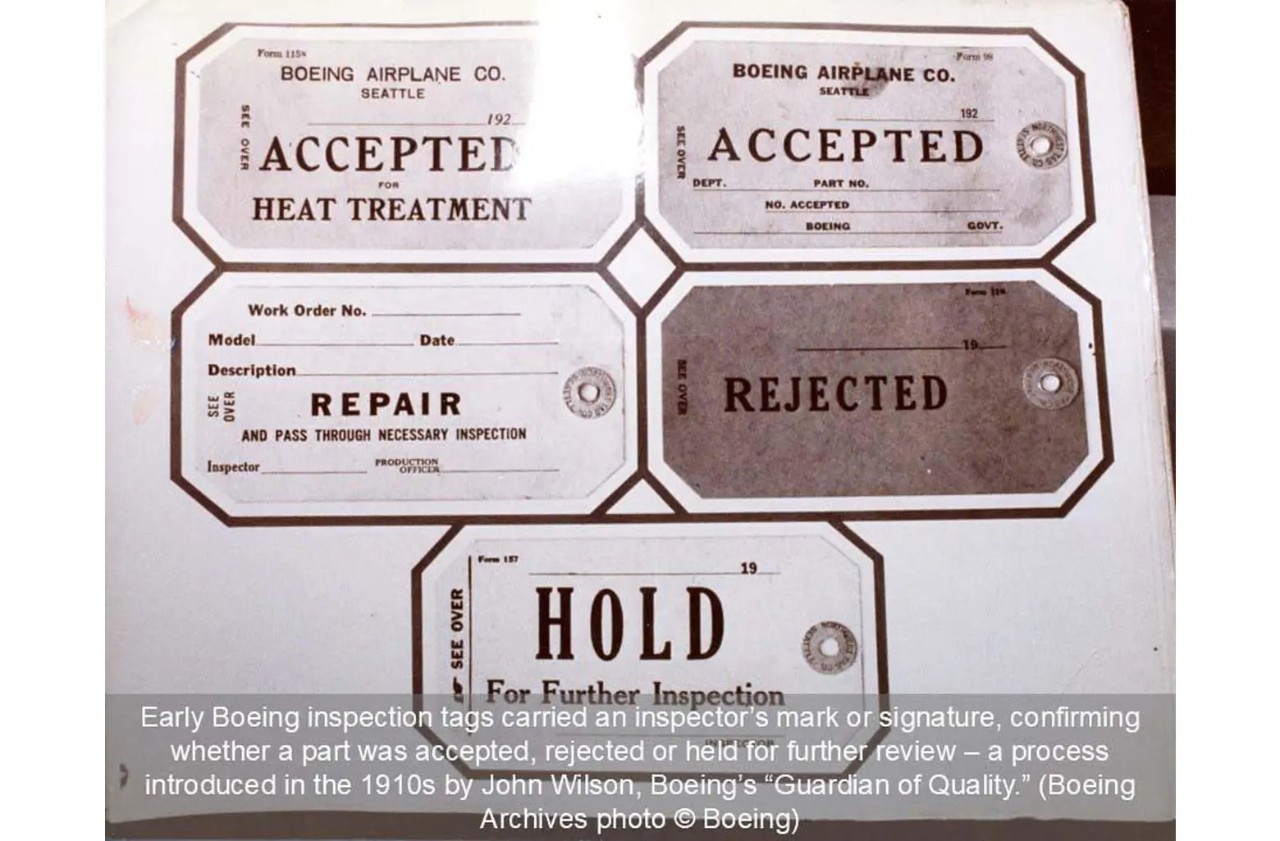


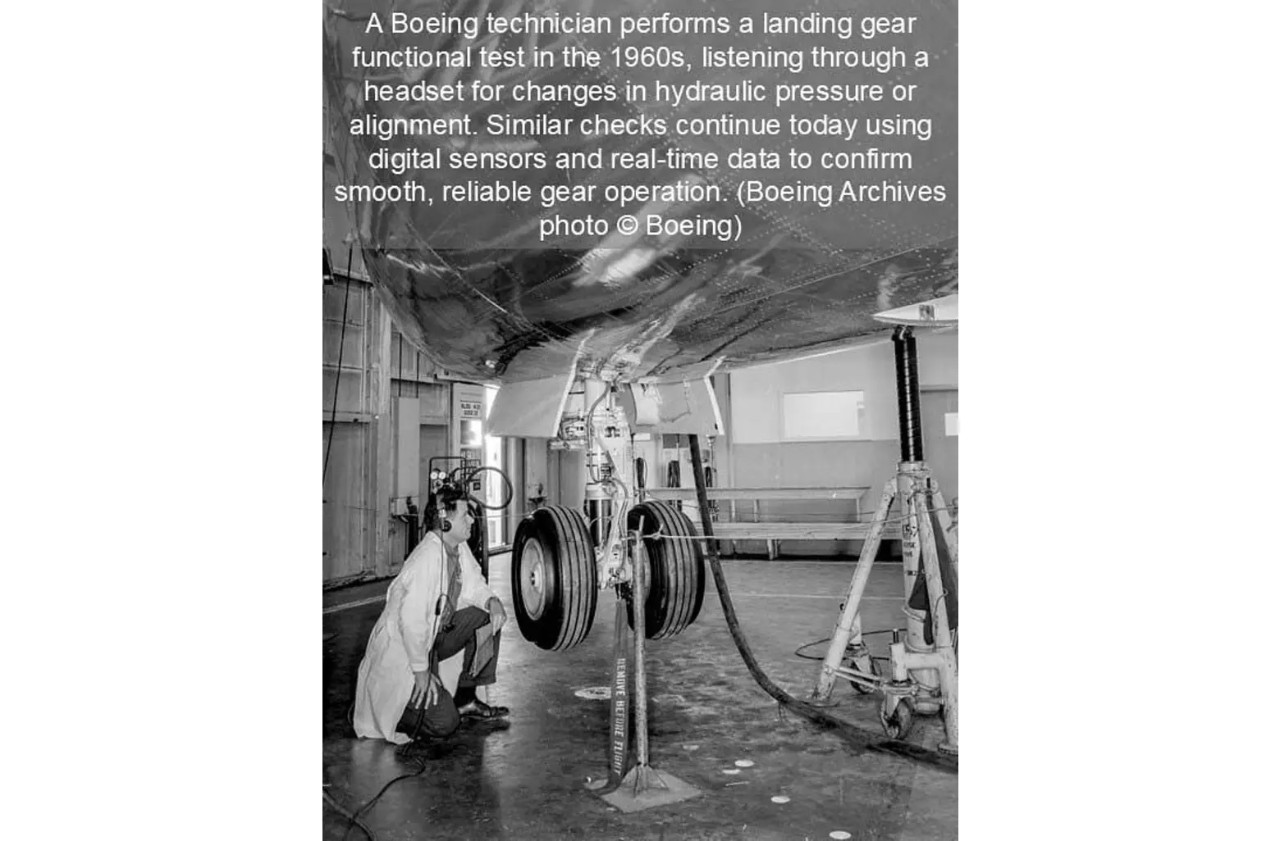


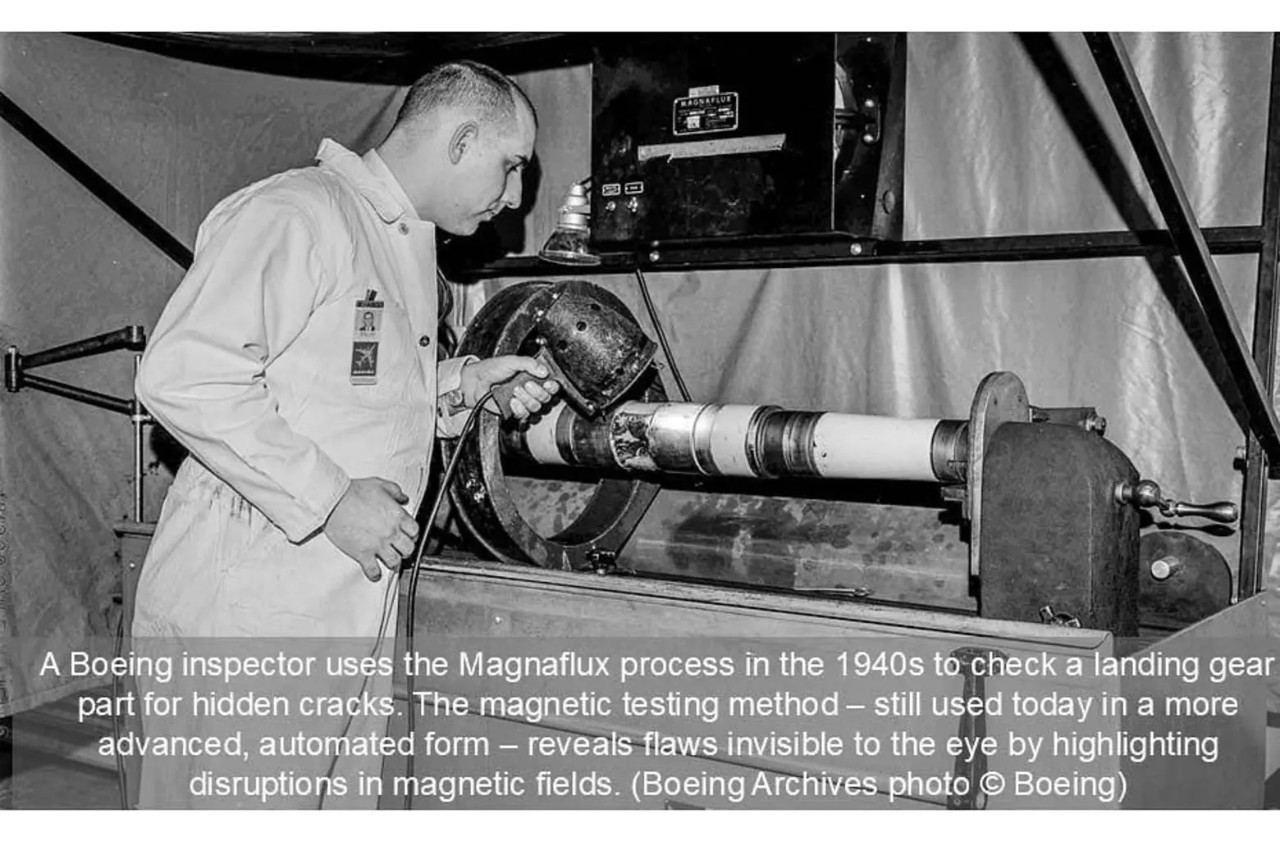
- Inspecting Engine Nacelle Panel
- Inspecting Fasteners
- Quality Control Club
- Inspection Tags
- Measuring a Part
- Quality Manuals
- Landing Gear Test
- Quality Circle Teams
- Inspecting a Fitting
- Inspecting Landing Gear Part
Built into every job
Until the 1940s, shop employees largely performed quality checks themselves. But by 1944, Boeing formalized those principles into its first Quality Department. One of its first managers, Elwood Kaiser, captured the philosophy that has lasted through the decades: “Quality cannot be inspected into our airplanes – it must be placed there by the individual employee,” he said.
When production surged in the 1950s, as Boeing expanded from wartime manufacturing into the jet age, employees created the Quality Control Club to share ideas and prevent defects. Factory posters reminded teammates that “Quality means reliability” and “Every person’s job is vital to quality.”
That spirit reemerged in the 1980s through Quality Circles – more than 600 employee-led groups met weekly to analyze issues and suggest improvements. Their ideas reduced rework, improved safety and quality, and strengthened Boeing’s reputation for precision.
- Today’s Employee Involvement Teams are similar, giving teammates across functions a structured way to share ideas – resulting in thousands of solutions that have improved safety, quality and efficiency.
In the 1990s, Boeing strengthened that foundation with systems like Lean manufacturing and the Quality Management System – part of an industry shift towards efficiency, consistency and customer focus.
- “Engaging our teams and listening to their feedback is foundational to lasting quality and continuous improvement,” said Kim Smith, vice president of Quality, Operations & Execution, Global Services. “When we own our work and share ideas, we deliver quality at every step, every time with the excellence and predictability our customers can depend on.”
Learning from challenges
As the company evolved, each decade brought challenges that tested but ultimately made its quality systems stronger.
Production slowdowns and mass layoffs in the 1970s led to workmanship issues that forced teams to rethink how they trained and supported mechanics on the floor.
By the 1980s, process gaps in defense programs prompted improvements to documentation and inspection processes.
Recent years brought more lessons through some of Boeing’s toughest moments – from delivery pauses in 2019 on the KC-46 tanker and 2021 on the 787 Dreamliner, to the 737 MAX grounding in 2019 and door plug accident in 2024. Each came with difficult reflection and significant change, including tighter inspections, clearer accountability and stronger links between Engineering, Manufacturing and Quality.
Over time, the experiences have shown how Boeing’s quality standards remain a constant, even as systems and tools evolve.
A legacy that endures
For more than a century, company leaders say Boeing has demonstrated a focus on quality, and a drive for improvement that continues today.
Teams are rewriting and simplifying thousands of decades-old procedures, and using digital tools to improve training and work instructions. Improvement plans based on data from inspections and supplier feedback are also helping teams spot trends and fix issues faster.
- “It’s up to each generation to meet the high bar set by our founder,” said Marisela Reyes, vice president of Quality and Lean for Defense, Space & Security. “Yes, our systems and processes evolve to leverage modern demands and technology, but our standard for quality is absolute.”
The big picture: November is World Quality Month. Boeing joins quality organizations across the globe during this annual opportunity to share progress and best practices.